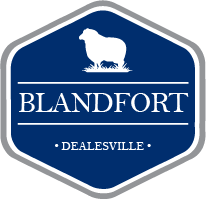Sheep farmer Thys Gelderblom from Riversdale says the persistent drought in the southern Cape has reconfirmed the breed’s true resilience. Denene Erasmus reports. A devastating drought has made it a difficult year for farmers in the southern Cape.
Coupled with low grain and milk prices, many farmers have been forced out of business. Sheep farmer Thys Gelderblom, however, says the dual-purpose Letelle breed has kept him afloat. Thys has farmed on Brakfontein (1 000ha) near Riversdale between the Langeberg mountains and the Atlantic ocean since 1980.
Over a decade ago he decided to convert his Merino flock to Letelle, mainly because Merino rams had become too expensive. “I believe the Letelle has a better income potential because it’s a more economically- balanced sheep,” explains Thys. “No single economic important characteristic is over-emphasised. It’s truly a dual-purpose breed with fine-wool characteristics.”
Thys is modest about the size of his flock, with sheep numbers in the quadruple digits, but he has no reservations when it comes to its performance. He pursues three lambing seasons in two years for a lambing rate of up to 160%.
The Letelle is top of the chops
“As a dual-purpose breed, the Letelle offers an income balance of roughly 70% meat and 30% wool,“ explains Thys. “It produces superfine wool of less than 19 micron, has excellent fertility and maternal characteristics, has a medium frame, and produces high-quality meat.”
The Letelle breed is known for superior quality meat with an excellent texture and exceptional marbling, says JM (Toitjie) du Toit, chairperson of Letelle (Pty) Ltd, the body governing the breed. He says DNA profiles done in November 2010 prove the breed offers enough genetic variability to select from to breed economically balanced animals.
Letelle sheep are early-maturing, reaching an ideal slaughter liveweight of 33kg to 35kg at around 150 days under favorable conditions. “I market some weaner lambs after four to five months at 33kg to 35kg with a carcass weight of 18kg to 21kg, or lambs directly after weaning to feedlots,” says Thys.
Members of Letelle (Pty) Ltd determine Letelle ram prices at a biannual general meeting, at roughly R2 200 to R3 200. This unique system ensures that rams are available to buyers at affordable prices. Letelle store lambs are in great demand at feedlots as their medium frame ensures an excellent feed-conversion ratio.
Coping with drought and a low grain price
Thys explains that the Letelle’s ability to adapt and recover rapidly after a period of stress makes it ideal to withstand drought. “I find the Letelle to be an easy-care sheep and a relatively unselective grazer,” he explains “They make good use of the little grazing we have left. We had very little natural grazing this year, but because of the low grain price I decided to use most of my crop as fodder to get a better return on my investment.
I still had to buy in some feed and this certainly increased my input costs, but the Letelle has an excellent feed-conversion ratio, which increases profitability.” Thys stresses that a sheep farmer should produce as much of his own feed as possible. He rotates grain – wheat, oats and barley – with lucerne, which is cut for hay.
Breeding and selection
“I’ve implemented a breeding cycle with ewes lambing three times in two years and the flock averages a lambing rate of up to 160%,” explains Thys. “Letelle ewes are highly fertile with excellent maternal abilities. Under favorable conditions they produce sufficient milk so the lambs, which are small at birth, grow very rapidly.”
Letelle rams can service more than 60 ewes, resulting in a favorable ram/ewe ratio. Thys’s rams have a seven to eight year life span. “We run the rams with the ewes for 34 days – two 17-day ewe oestrus cycles. This allows the maximum number of ewes to be impregnated,” he stresses. Oestrus is the period when the female is receptive to the male and will stand for mating. In sheep, oestrus can occur many times during a season.
Older ewes are culled when productivity and wool production start to decline. Thys wants to maintain the size of his flock and the ewe replacement rate averages 25% per year, but this depends on several factors, like the amount of feed available on the farm.
Replacement ewes are initially selected on conformation and wool quality and the ones that are retained are later selected on fertility. “Young ewes that fail to conceive are given a second chance, but if they again fail they are sold for slaughter,” says Thys.
Sheep are shorn every eight months, slotting in with the lambing season. The average wool clip is roughly 2,5kg per sheep. “We shear the pregnant ewes shortly before they lamb. A shorn ewe looks better after her lamb because she’s more attuned to the weather. If she’s cold, she knows that her lamb must be cold too,” says Thys.
